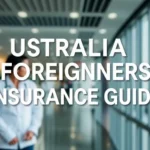Serbia Health Insurance Foreigners
You deserve clarity when navigating health insurance for foreigners in Serbia. You might even feel a bit overwhelmed by forms, coverage options, and legal jargon. The truth is, having the right coverage isn’t just paperwork—it can save your life (and your wallet) in an emergency. In this guide, you’ll learn what insurance you need, how to get it, and tips to avoid common pitfalls. We’ll break down public vs. private plans, digital nomad options, costs from €30/month, and the steps for a hassle-free application. Ready for peace of mind?
Table of Contents
What Is Health Insurance for Foreigners in Serbia?
Here’s the thing: Serbia welcomes expats, students, and digital nomads, but you can’t skip insurance. Foreign nationals staying for work, study, or long-term residence must show proof of coverageTurkey Health Insurance for Foreigners 2025.
The context matters. Serbia’s healthcare system is modernizing ahead of EU candidacy, blending public services with a growing private network. That means faster service, English-speaking staff, and digital solutions (like e-appointments) at private clinics.
Let me explain how it works. Public insurance covers inpatient and outpatient care but can involve lengthy waits. Private plans, starting around €30/month, often include direct billing and telemedicine. You decide which fits your stay and budget.
“Genki’s comprehensive coverage with high limits is ideal for foreigners seeking reliable access to Serbia’s private healthcare facilities.” – Digital Nomad Insurance Expert
Actionable takeaway: Compare public vs. private plans before you land. List your must-have benefits (dental? repatriation?) and set a budget.
Why You Need It: Compliance and Peace of Mind
Hook: Imagine a sudden illness in a foreign country—scary, right? That’s exactly why Serbia mandates health insurance proof for visa and residence permit applications.
Context: Without valid coverage, your permit can be rejected. And guess what? You’d be liable for all costs, which can easily top €5,000 for a hospitalization.
Detailed explanation:
Expats and students must show at least €20,000 in coverage for the duration of stay. Digital nomads often choose international plans with global emergency evacuation—think SafetyWing at roughly $60/month with a $250 deductible (Nomad Wise).
Real example: Sarah, a graphic designer from Canada, saved over €1,200 in costs when a minor surgery was covered by her private plan.
Expert data: According to Residence Permit Serbia Guide, proof of Serbian health insurance is non-negotiable for permits.
Actionable takeaway: Scan your policy document and highlight key coverage limits. Present a clean copy with your permit application to avoid delays.
How to Get Health Insurance in Serbia as a Foreigner
Hook: Ready to apply? It’s simpler than you think—if you follow these steps.
Context: Applications can be online or at a local office. You’ll need your passport, visa/residence permit, address in Serbia, and—of course—your chosen insurance quote.
- Research Providers: Public HZZO vs. private (Genki, SafetyWing).
- Get a Quote: Online forms usually take minutes.
- Submit Documents: Email or visit the insurer’s office.
- Pay Premium: Most accept bank transfer or card.
- Receive Certificate: Print it for visa/residence permit.
Real example: Ivan from Brazil applied for Genki via their web portal in under 24 hours, then uploaded his certificate to the e-government portal for visa processing.
Expert quote: “Private healthcare in Serbia now rivals Western Europe,” notes Best Cardiac Hospitals. “English support and billing networks are expanding rapidly.”
Actionable takeaway: Keep digital copies of your policy on your phone for emergencies. And add your insurer’s 24/7 hotline to contacts.
Costs, Coverage, and Best Plans
Hook: What’s it going to cost? Let’s break it down so you can budget without guessing.
Context: Prices vary by age, plan scope, and deductible. Here’s a snapshot for a 30-year-old:
- Public HZZO Plan: ~€20/month (limited private clinic access).
- SafetyWing (Digital Nomad): $60/month, $250 deductible, $250,000 coverage.
- Genki Comprehensive: €30–€50/month, €55 deductible, €1.1M coverage.
Detailed explanation: SafetyWing covers emergencies worldwide but may require upfront payment. Genki partners with local clinics for direct billing. Public plans auto-renew with your residence permit.
Real example: Emma from Australia saved €200 by switching to a Genki plan with direct billing—forgoing upfront bills at private hospitals.
Actionable takeaway: List your expected medical needs (e.g., vision, dental) and match them against plan benefits. Sometimes a slightly higher premium adds huge value.
FAQ
Q1: Can I use an EU Health Insurance Card?
A1: Yes! EU/EEA nationals can use the EHIC for public services, but it’s wise to supplement with travel insurance for private clinics.
Q2: Is dental covered?
A2: Standard plans often exclude major dental. Add a dental rider or choose a private plan with that option.
Q3: How soon does coverage start?
A3: Typically 24–48 hours after premium payment, but confirm with your insurer.
Conclusion
Simply put, securing health insurance for foreigners in Serbia is non-negotiable if you value peace of mind. You’ve learned what plans exist, why they matter, and how to apply step-by-step. Next steps:
- Choose your coverage type (public vs. private).
- Obtain quotes and compare benefits.
- Submit documents for your visa or residence permit.
The bottom line is you can enjoy Serbia without worrying about medical bills. Ready to explore Belgrade’s cafes or Novi Sad’s festivals? Your health insurance has got you covered—literally.
Categories: Insurance, Expat Living
Tags: serbia health insurance, expat insurance, digital nomad





